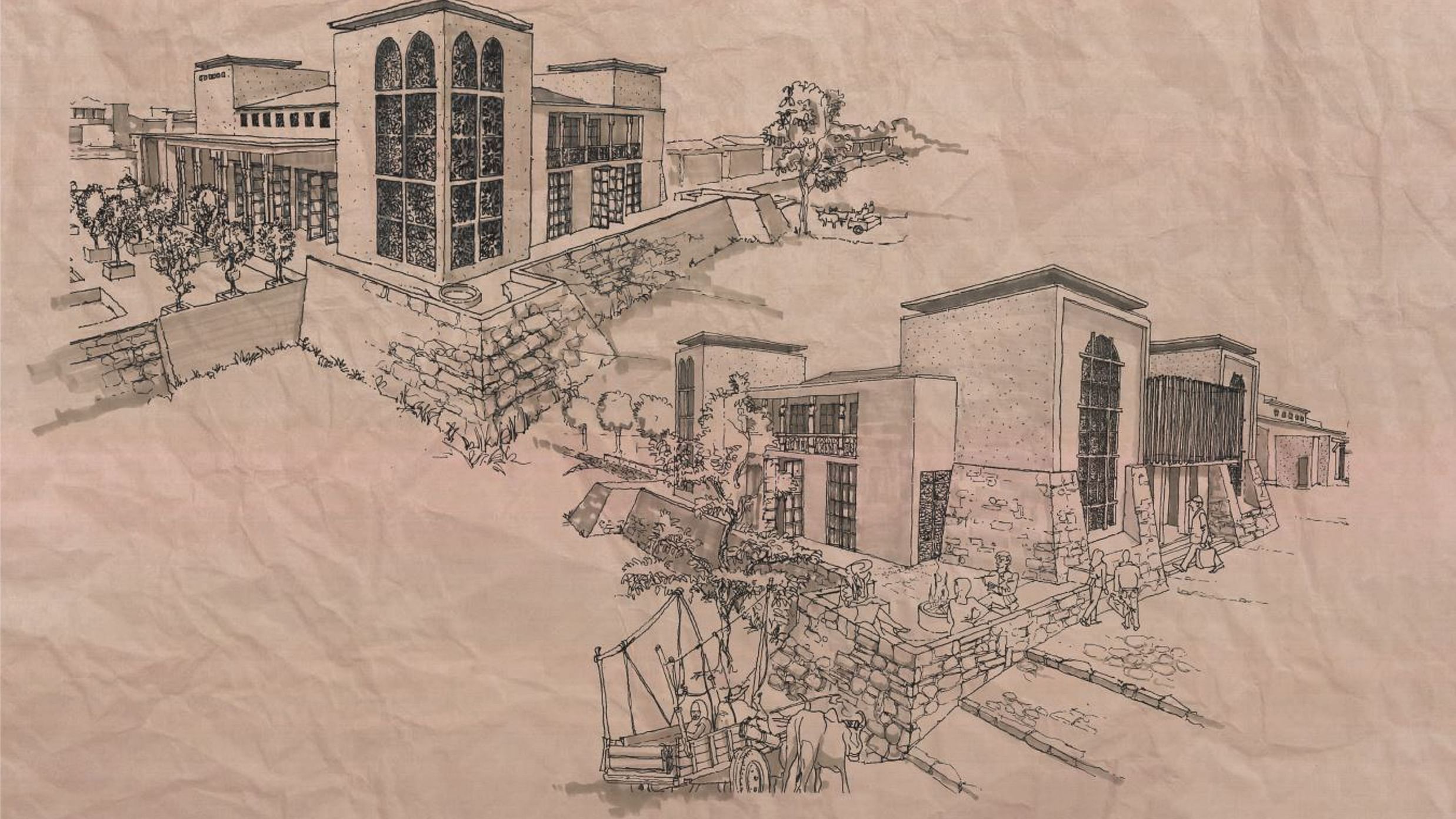
Looking at it now, you’d never imagine that the site for our lodge was once a completely barren tract of land, formerly a working farm, now void of trees, shrubs, wildlife and buildings.
When architect Nick Plewman arrived at the site with Jimmy, Chris and Debra - he was literally presented with a blank slate. So blank in fact that the architectural narrative for the lodge had to be crafted by looking beyond the site’s borders rather than within them, at the neighbouring village of Haripur. It was there that inspiration struck.
Wandering the streets of Haripur and Junagadh, a local vernacular emerged that cantered around symbiosis, rather jumbled and informal, but symbiosis, nonetheless. Here, well-worn cobbled streets and alleyways interlace the buildings bringing a network of life and energy in the form of oxcarts, people and livestock. Homes (known locally as kothis) are built using a combination of indigenous natural materials and are built up and evolve to over time, with the addition of rooms, verandas and lean-tos, lending them a charmingly eclectic aesthetic. Beyond the entrance door of these kothis exist hidden courtyards in which daily life unfolds for man and livestock. Some of the villages mark their entrance with ancient but grand gates, Junagadh being one of them.
Livestock and wild animals are very much a part of these village scenes and here, where livestock are occasionally taken by roaming Asiatic lion, the community maintains a sense of balance and a deep respect for all wildlife. Farming takes place in and around the villages in an informal arrangement and wild animals are free to roam this landscape. That man and wild have coexisted peacefully for thousands of years here was of great inspiration to us, manifesting in a beautiful synthesis of agriculture, villages, people and conservation that gave rise to our design narrative.
“We wanted the property to feel as though it could have been here for decades, nestled between teak forest and national park - it all comes down to integration. The size of the site and the fall of the land lent themselves to a natural village-like arrangement of buildings in close proximity to one another. The layout for our kothis takes its language directly from the nearby villages, with a more haphazard arrangement that fringes a series of meandering streets,” says Nick.
It was important to Nick that the site should maintain its integrity as a working farm at the same time creating a sense of wilderness so he, together with the landscape architect Charldon Wilken, ensured that the integration of built structures, natural landscape and the working farm should be seamless and organic; it’s not only blurred but enmeshed. That’s why you’ll experience pockets of planting among the buildings, re-wilded forest that butts up against developed zones and meadows and farmland that flank the lodge. The landscaping program to achieve this was monumental with thousands of trees being planted.


The double storey kothis follow a similar vernacular to those in the local villages whereby a handful of locally sourced and crafted materials have been combined such as sandstone, limestone, plantation teak and stucco. The traditional verandas which are found on the cooler upper levels of local village homes where the breeze is alive are a feature in every one of our kothis. Even the small swimming pools in each kothi are a nod to authentic Indian stepwells.
The haveli, where guests first arrive and where they gather to feast, relax, swim or unwind is flanked by a set of impressive ramparts clad with jali screens. It marks the entrance to the village, announcing Aramness Gir with its contemporary but locally relevant façade. From there, a courtyard with its characteristic tinkling water feature gives way to our village street, the very heart of our lodge.
“In designing Aramness Gir, we chose to celebrate the fact that wildlife and thousands of years of farming are integrated. It’s a symbiosis which has been maintained and initiated long before our lodge came to be and it’s the guiding philosophy of how Aramness Gir will be sustained,” says Nick.

